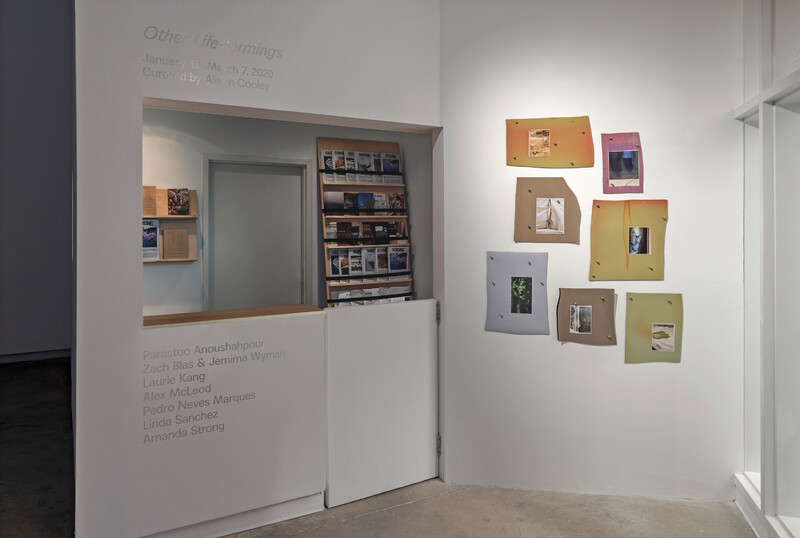

Terrene
Terrene consists of collaged images on fragments of hand-cut and tanned photosensitive film. The collaged images represent differing but related forms of worlding or world-making: industrial, exterior, “hard” spaces of construction captured on a smartphone, and internal, domestic, “soft” spaces of Kang’s grandmother’s garden, made with a lo-fi handheld scanning wand, intended for scanning documents on the go. Distinctions between “hard” and “soft” quickly fade and the oppositions aren’t so clear.
Drawing on the work of thinkers like Karen Barad, Donna Haraway, Trinh T. Minh-ha, Isabelle Stengers, Anna Tsing, and Sylvia Wynter, who work at the fringes of different forms of knowledge (including science and technology studies, feminist theory, and post-colonial theory), Kang’s work often eludes singular disciplinarity and unsettles binaristic logics through thought and embodiment. In Terrene, each image destabilizes the human as the only figure allowed to experience agency. Construction sites appear both earthly and other-worldly—in-between, latent, and larval. Images from the artist’s grandmother’s garden (located in a sunroom of her apartment) fixate on objects and surfaces: plants, vessels, the window, her slippers, the floor. Kang’s handheld scanner touches the objects and the objects touch back, producing distortions and abstractions. In layered compositions that gesture to ongoing conflations and mutations of interior and exterior, the works insist on a state of formation, of in-betweenness, of hybridity.

The Blackwood
University of Toronto Mississauga
3359 Mississauga Road
Mississauga, ON L5L 1C6
[email protected]
(905) 828-3789
The galleries are currently open. Hours of operation: Monday–Saturday, 12–5pm.
Facebook | Twitter | Instagram
Sign up to receive our newsletter.
The Blackwood is situated on the Territory of the Mississaugas of the Credit, Seneca, and Huron-Wendat.